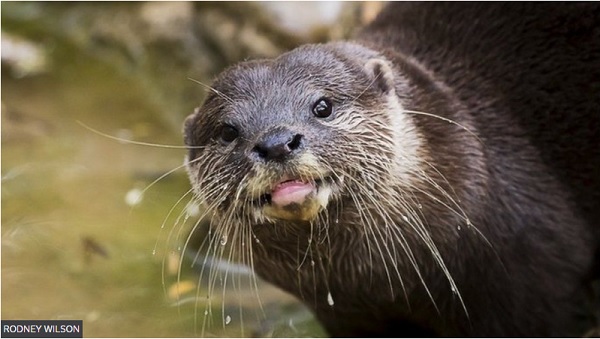
Toxic "forever chemicals" used in non-stick saucepans and food packaging have been found in otters across England and Wales, according to a study.
The substances, called PFASs, are also used in waterproof clothing, stain resistant products and fire retardants.
The chemicals are linked to pregnancy complications, liver disease, cancer and other illnesses.
Scientists say concentrations of these compounds in otters are a guide to levels of pollution in the environment.
The substances can leach out from products, getting into drains and sewage treatment works - from which they can then escape and contaminate the environment more widely.
PFAS substances are present in farmland sludge, which can wash from fields into rivers. Factories and landfill sites are another source for the chemicals.
Denmark recently banned their use in food packaging paper.
Used since the late 1940s, PFAS chemicals - which are divided into compounds called perfluoroalkyls and polyfluoroalkyls - help to make products water, grease and stain resistant.
They are known as "forever chemicals" because they don't break down easily in the environment. They contaminate fish, which can then be ingested by animals and humans. PFAS compounds can also get directly into drinking water.
Researchers tested 50 otters found dead in 2007-09 and detected PFASs in all of them. 80% of the animals had at least 12 different types of the chemicals in their livers. In a separate study for a long-term monitoring scheme called the Otter Project, animals that had died between 2014-19 all contained two types of restricted PFASs.
Emily O'Rourke, a PhD student at Cardiff University and lead author of the study, told BBC News that otters were a "sentinel" species, revealing "widespread environmental pollution" of British fresh waters. The research backs up a recent Environmental Audit Committee report which showed there was a "chemical cocktail" of pollutants in rivers.
It's unclear whether the concentrations of chemicals found in the otters are high enough to cause harm. The otters mainly died in road collisions and so the precise impact of the chemicals on their health is not known. Ms O'Rourke said it was likely the toxic chemicals had a "sub-lethal" effect.

PFASs will be in the environment "for years and years to come" according to Ms O'Rourke.
"When we are washing clothes, or just washing things down the drain, they get into our sewage works, which are not designed to remove PFASs because they're ancient. They are also retained in the sewage sludge," she said.
Ms O'Rourke said there were over 5,000 different types of the chemicals now in use. So far they had been regulated individually, but she believes they should be regulated by class.
"Denmark recently banned their use in food-contact paper - like in fast-food packaging - and Britain needs to catch up. Now that we are not under the EU chemicals framework, we need to get our own chemicals strategy," Ms O'Rourke explained.
Some 27 NGOs including Breast Cancer UK, The Alliance for Cancer Prevention and the CHEM Trust have come together to set out the case for a UK Chemicals Strategy, which should include phasing out "all very persistent chemicals, including the whole PFAS family and other halogenated chemicals".
Since 2000, a series of voluntary industry initiatives has limited their use. However, according to the study, concentrations of PFASs are regularly recorded that are above the Environmental Quality Standards for water and fish in England.
In July 2021, Germany, Denmark, the Netherlands, Norway, and Sweden officially informed the European Chemicals Agency (ECHA) of their intention to restrict PFAS.
Dr Elizabeth Chadwick, principal investigator on the Otter Project, encouraged members of the public to continue reporting otters found dead.
"Our research was possible though the ongoing collection of otters found dead from across Britain. Our archive has samples from more 4,000 individuals collected since 1992; it is a unique and important resource for understanding this protected species, and for understanding environmental contamination and health," she said.
The findings have been published in the peer-reviewed journal Environmental Science & Technology.

